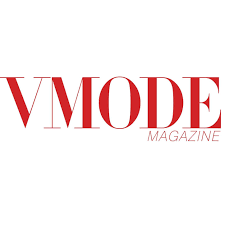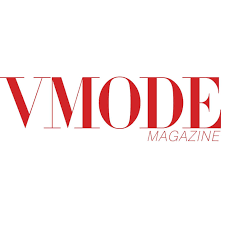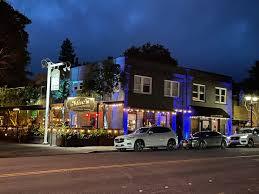A speakeasy bar is more than just a place to drink—it is an immersive experience, a journey into history, ambiance, mystery, and craft. In recent years, speakeasy bars have enjoyed a resurgence as people seek more than just mass-market venues—they want style, exclusivity, and stories. What makes a speakeasy bar stand out? Let’s explore its roots, design principles, the guest experience, and what the future holds for these hidden gems.
Origins and History
The term “speakeasy bar” dates back to the Prohibition era in the United States (1920-1933), when the production, sale, and transport of alcoholic beverages were outlawed. People decanted liquor, set up hidden back rooms, and created private joints where patrons had to whisper, “speak easy,” so as not to alert the authorities. These places were frequently disguised, secretive, and rich with character.
Over time, speakeasy bars became known for live jazz, clandestine cocktails, inventive decor, and concealed entrances. Although the original illegal speakeasies disappeared with the repeal of Prohibition, their mystique lives on. Modern speakeasy bars draw on that golden age to create venues that feel intimate, nostalgic, and exciting.
Defining Characteristics of a Speakeasy Bar
What sets a speakeasy bar apart from a regular bar or cocktail lounge? Several features stand out:
-
Secret or Hidden Entrance
Many speakeasy bars play with mystery. Hidden doors, false bookcases, unmarked facades—these add drama and make arriving feel like discovering something special. The anticipation of finding the entrance is part of the charm. -
Intimate, Ambient Decor
Softer lighting, vintage furniture, rich textures, plush seats, dark woods or battered leather, old memorabilia, low ceilings in some cases—all help create warmth, comfort, and nostalgia. The design often references the 1920s or 30s, art-deco, jazz clubs, or Prohibition-era charm. -
Craft Cocktails & Unique Menu
A speakeasy bar usually puts the mixology front and center. Classic cocktails with high-quality ingredients, twists on familiar drinks, sometimes seasonal or bespoke creations. Cocktails aren’t just served; they’re crafted. The menu often reflects care, creativity, and sometimes secrecy—secret menu items, hidden drinks, or off-menu specials. -
Exclusivity & Discretion
Part of the appeal of a speakeasy bar is feeling like you’re part of a privileged circle. Some require reservations, knowledge of passwords, or simply that you know where to look. Staff are typically trained to maintain decorum, subtlety, and discretion. The vibe is less about loud crowds and more about conversation, connection, and ambiance. -
Music & Atmosphere
Live jazz, blues, or soft background music, often from vinyls or vintage acoustic setups. Not always loud, but immersive; sometimes a piano in a corner, or a small stage for a singer. The overall sound design is intentional—part of the sensory experience of the speakeasy bar.
Designing & Running a Speakeasy Bar
Building a successful speakeasy bar requires both artistic flair and practical planning. Here are some key considerations:
-
Theme & Identity: Decide on the era, aesthetic, or story your speakeasy bar will tell. Will it be 1920s New York? An underground jazz lounge? A secret garden behind a facade? Consistency in décor, cocktails, music, staff uniforms—all reinforce identity.
-
Entrance Experience: Since hidden entrances are emblematic, invest in details: false bookcase, disguised door, or a nondescript storefront that opens into the real space. The reveal should feel magical.
-
Lighting & Materials: Dim, warm lighting, candlelight or low-wattage bulbs, lampshades; materials like dark woods, brass accents, leather upholstery. Rugs, vintage mirrors, artwork with stories. These tactile, visual elements create emotional impact.
-
Cocktail Craftsmanship: Your bartenders should be artists—knowledgeable of spirits, techniques, flavor combinations. Use high-quality ingredients, infusions, housemade syrups. A standout cocktail list is what can make or break a speakeasy bar.
-
Service & Ambience: Staff should know that service is as much about mood as speed. Discretion, attentiveness, reading the mood. Avoid overly bright lights or loud music that disrupts conversation. Cleanliness, comfort, and details (like well-maintained glassware, comfy seats) matter.
-
Sustainability & Local Sourcing: An emerging trend among modern speakeasy bars is using sustainable materials in design (reclaimed wood, vintage pieces), energy-efficient lighting, locally sourced spirits or mixers, minimizing waste. It not only feels good ethically but often resonates with customers.
Guest Experience What Patrons Expect
For the guest, visiting a speakeasy lounge is a multisensory journey:
-
From the moment one searches for the entrance: anticipation, curiosity, sometimes navigating secret panels or unassuming doors.
-
Once inside: subdued lighting, smell of old wood or leather, subtle music, perhaps candlelight or vintage lamps; a menu that feels exclusive.
-
Ordering: interaction with a bartender who might ask your preferences, suggest pairings, offer something off-the-menu; cocktails served beautifully, often with attention to garnish or presentation.
-
Social mood: relaxed, intimate conversations rather than loud partying; maybe live music; maybe a corner with vinyl records or artwork.
The overall idea is escape—escape from the bustle outside, into a more elegant, more thoughtful, more mysterious world. That is what draws people back to speakeasy bars again and again.
Modern Trends & The Future
Speakeasy bars continue evolving. Some trends to watch:
-
Interactive or Themed Nights: Prohibition-era dress-up nights, jazz or swing performances, secret guest bartenders, immersive experiences.
-
Digital Secret & Social Hints: Clues on social media or via newsletter about a password, secret menu item, or invitation-only event to create buzz.
-
Hybrid Spaces: Some speakeasy bars double as art galleries, performance venues, or intimate dining spots—so that the cocktail culture is part of a bigger cultural offering.
-
Health & Safety Sensibilities: Even in intimate settings, good ventilation, hygiene, spacing, and care about listener experience are becoming priorities, especially with ongoing global concerns.
-
Global Localism: While the speakeasy bar aesthetic has roots in the U.S., bars all over the world are adapting it with local flavor—local spirits, botanical flavors, regional influences in music or food.
Why People Love a Speakeasy Bar
Finally, what is it about a speakeasy bar that people find irresistible?
-
Mystery & Secrecy: The secret door, the hidden entrance, the password—these all add drama.
-
Authenticity: You feel part of a story, of history. The décor, playlist, cocktails evoke an era.
-
Escapism: A mind break from everyday lights, phone notifications, crowds; a dim corner and a good drink, conversation, perhaps music.
-
Craft & Quality: When everything is done with care: the drink, the service, the ambiance—people feel the difference.
-
Social Prestige & Discovery: Telling friends about this “hidden gem,” feeling like you discovered something few know about—that adds social reward.
Conclusion
A speakeasy bar is far more than just cocktails. It is the art of ambiance; the interplay of secrecy, design, craft, and storytelling. Whether you're a patron seeking refuge from the ordinary, an entrepreneur dreaming of creating one, or a traveler hunting hidden spots, the speakeasy bar offers something magical.
In a world filled with bright lights and loud service, the subtler, more refined experience of a speakeasy bar reminds us that sometimes the best moments are those discovered quietly, with intention, in shadow and soft glow.



